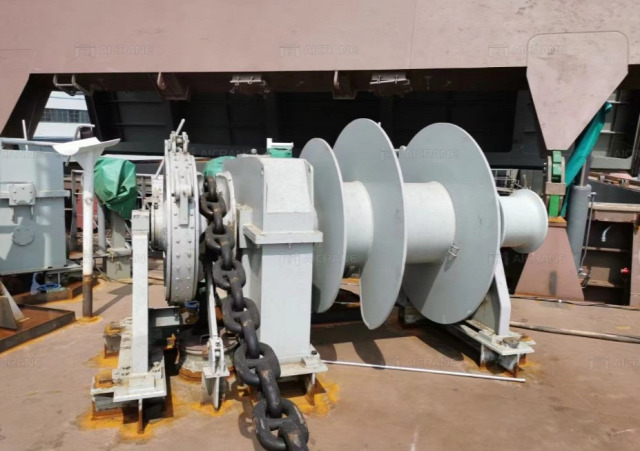Deck winches play a crucial role in the maritime industry, providing essential lifting and pulling capabilities for various operations on ships and offshore structures. The installation of deck winches requires careful consideration to ensure optimal performance, safety, and longevity. In this article, we will explore the different methods used to install deck winches, including deck-mounted, wall-mounted, and pedestal-mounted options. Understanding these installation methods will assist in selecting the most suitable approach for specific vessel requirements.

Deck-Mounted Installation:
Deck-mounted installation is the most common method for installing marine deck winches. This method involves securing the winch directly to the deck of the vessel using appropriate mounting brackets or foundation plates. The winch is strategically positioned to ensure proper alignment and access for operations. Deck-mounted winches are typically utilized in areas where space is available, and the deck structure can withstand the loads exerted during winching operations.
During deck-mounted installation, it is crucial to consider factors such as load capacity, weight distribution, and structural integrity. Adequate reinforcement of the deck is essential to handle the forces exerted by the winch, especially when dealing with heavy loads. Engineers must assess the deck's load-bearing capacity and reinforce it if necessary to ensure safe and efficient winch operation.
Wall-Mounted Installation:
In certain applications, wall-mounted installation is a preferred method for deck winches. This installation approach involves attaching the winch to a sturdy wall or vertical structure, providing a stable and secure mounting platform. Wall-mounted winches are commonly used when space constraints or specific operational requirements make deck mounting impractical.
When opting for wall-mounted installation, careful consideration must be given to the load-bearing capacity of the wall or structure. The wall must be capable of withstanding the vertical and horizontal forces generated during winching operations. Structural engineers should assess the wall's integrity and implement any necessary reinforcements to ensure the winch's safe and reliable operation.
Pedestal-Mounted Installation:
Pedestal-mounted installation involves the use of a dedicated pedestal or column to support the deck winch. This method is often employed when the winch needs to be elevated to improve operational efficiency or provide a clear line of sight for operators. Pedestal-mounted winches are commonly utilized in applications such as ship mooring, where an elevated position enhances visibility and control during the docking process.
During pedestal-mounted installation, careful engineering is required to ensure stability and load-bearing capacity. The pedestal or column must be designed to handle the maximum loads encountered during winching operations. Adequate anchoring and reinforcement are essential to prevent excessive movement and ensure safe and efficient winch performance.
Additional Considerations:
Regardless of the chosen installation method, there are several additional considerations that must be taken into account for deck winch installations:
a. Power and Control Systems: Adequate power supply and control systems must be planned and implemented to ensure seamless operation of the deck winch. This includes the selection of appropriate motors, electrical connections, and control interfaces that align with the vessel's power infrastructure and operational requirements.
b. Safety Measures: Safety is paramount during winch installations. Safety features such as emergency stop buttons, overload protection systems, and proper guarding should be incorporated into the design to prevent accidents and protect personnel.
c. Maintenance and Accessibility: Accessibility for maintenance and inspection is crucial to ensure the longevity and efficient operation of deck winches. Adequate space should be allocated for routine maintenance tasks, such as lubrication, inspection, and part replacement.
Conclusion:
The installation of deck winches requires careful consideration of various factors to ensure optimal performance, safety, and reliability. Deck-mounted, wall-mounted, and pedestal-mounted installation methods offer flexibility to accommodate specific vessel requirements. By selecting the appropriate installation method and considering factors such as load capacity, structural integrity, power and control systems, safety measures, and maintenance accessibility, naval architects and engineers can ensure the successful installation and operation of deck winches in marine and offshore applications.

